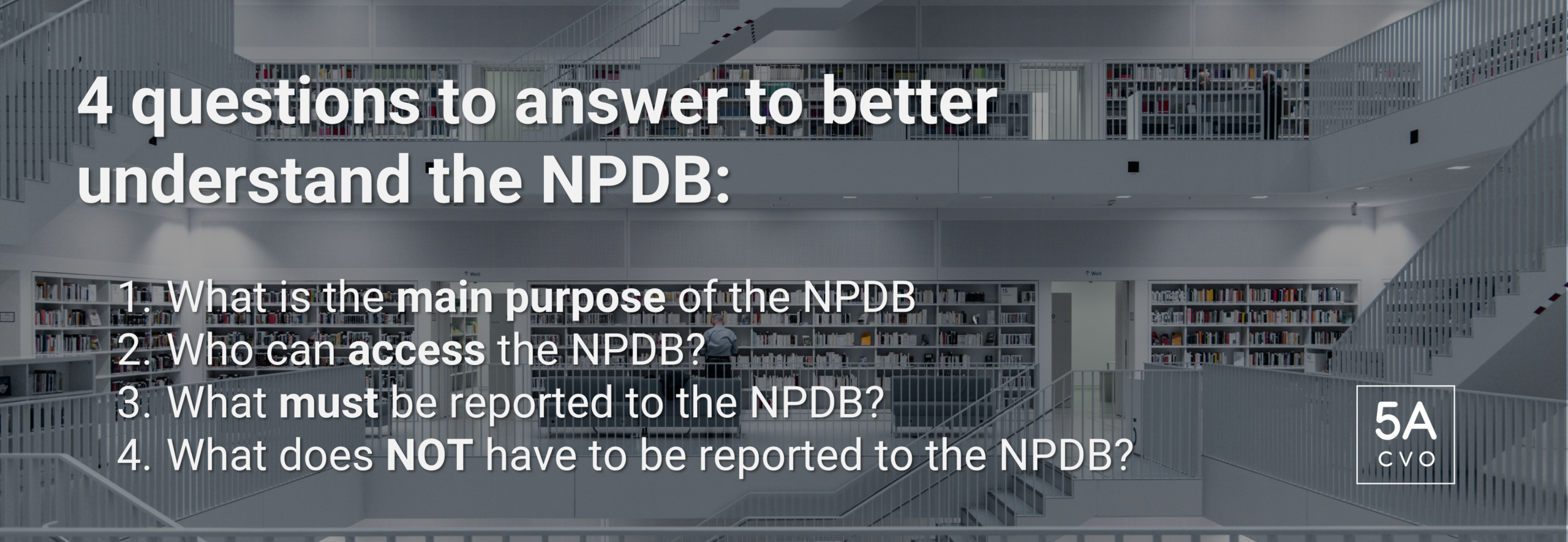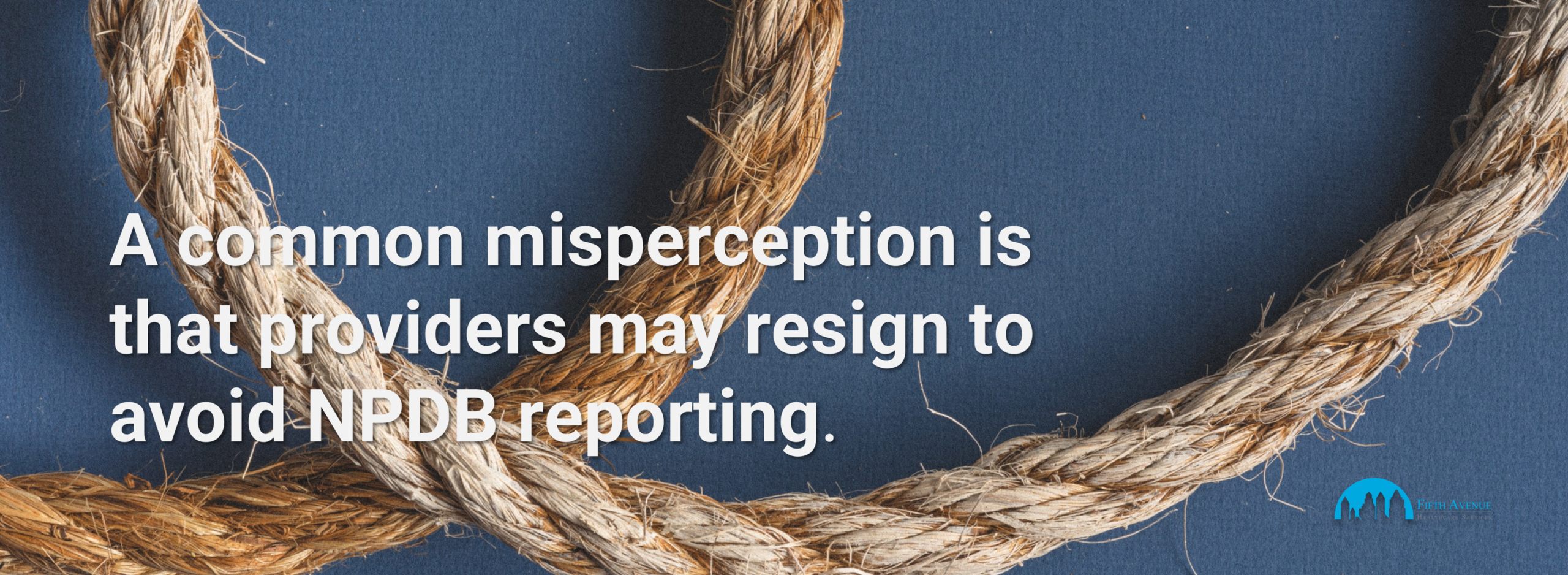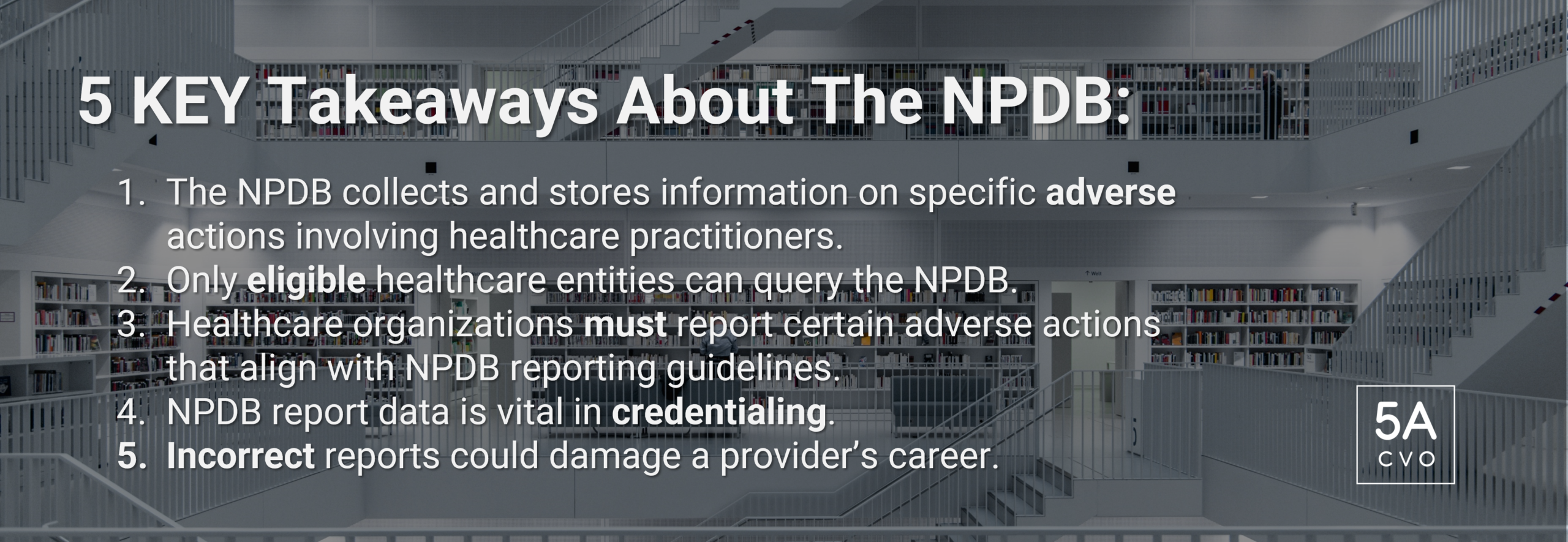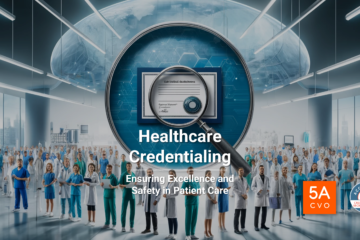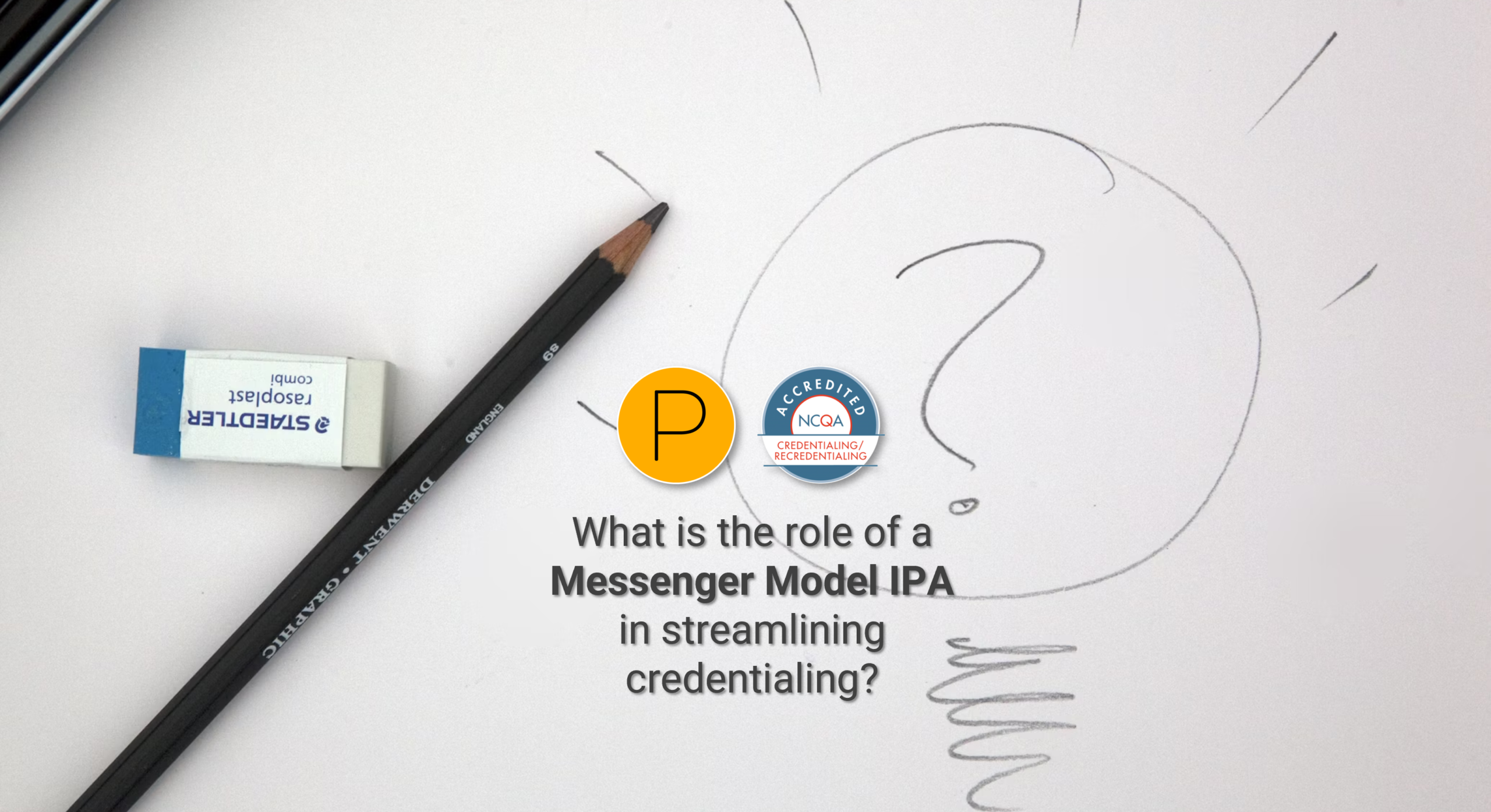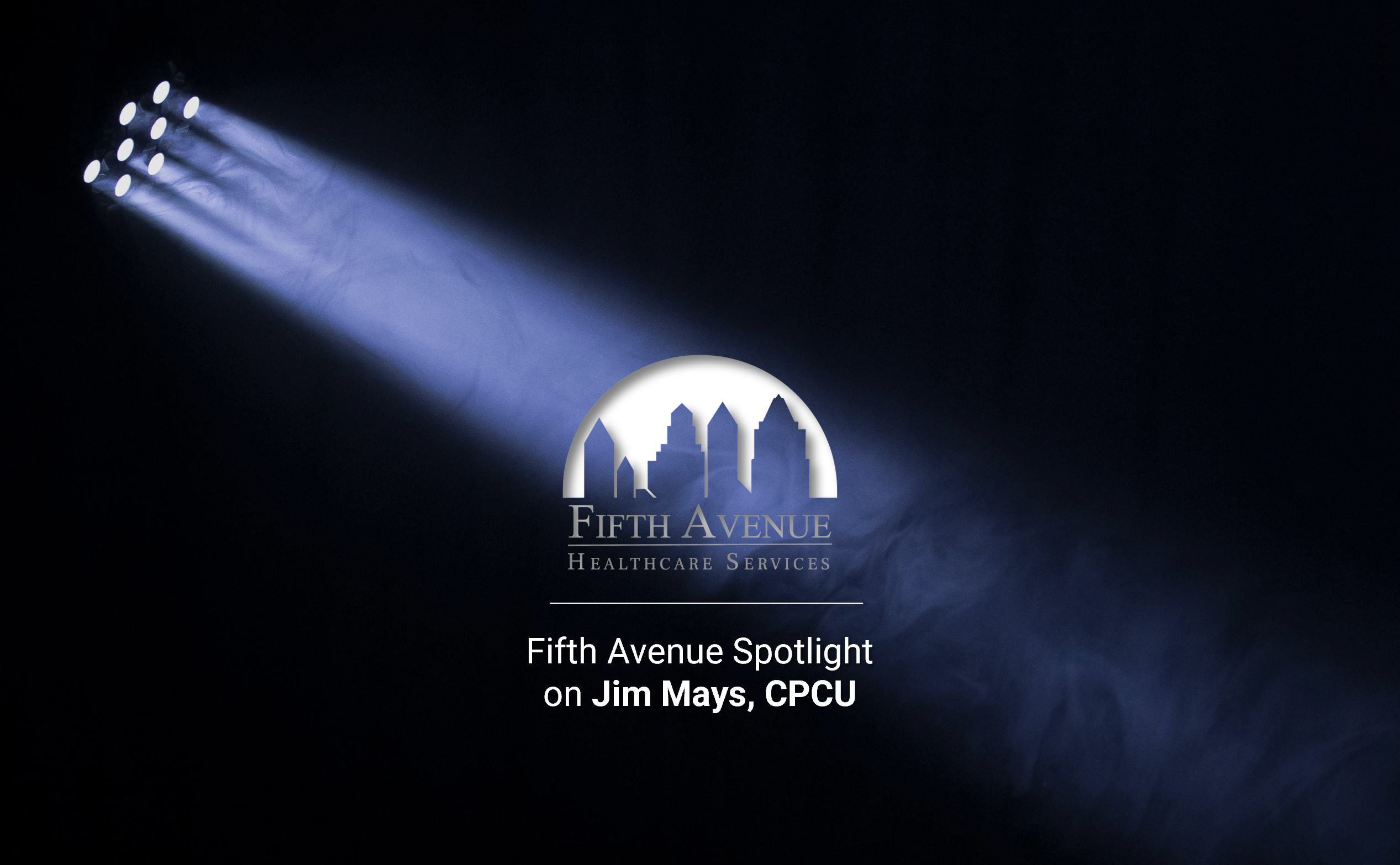The NPDB (National Practitioner Data Bank) is one of the most widely used tools in the healthcare industry. Hospitals, health plans, credentials verification organizations, and other entities often rely on the repository for various reasons.
The NPDB is an online archive of reports that contain data on medical malpractice payments and specific adverse actions concerning healthcare practitioners, providers, and suppliers. Congress created it in 1986 to prevent practitioners with a history of poor performance from relocating without disclosing their past actions.
Under federal regulations, qualified entities can submit reports to or retrieve data from the NPDB. Individuals and organizations who are the subjects of these reports can access their information, but the reports remain confidential and inaccessible to the general public. The NPDB is vital in promoting high-quality healthcare and preventing fraudulent activities and abuse within healthcare delivery systems. As stated on its website, the data bank’s mission is “to improve health care quality, protect the public, and reduce health care fraud and abuse in the U.S.”
This article will answer four questions to help you better understand the NPDB and how healthcare professionals can and should use it.
Question #1: What is the Purpose of the NPDB?
The Health Care Quality Improvement Act of 1986 (HCQIA) led to the creation of the NPDB to safeguard the public by prohibiting practitioners from moving between states or hospitals without disclosing malpractice payments or negative action records during the credentialing, employment, licensing, or monitoring process. The legislation also strove to shield peer review organizations from personal financial damages.
The NPDB opened to support peer review and credentialing on September 1, 1990. It began to collect and share electronic data about the professional conduct and competence of dentists, physicians, and other healthcare practitioners. The United States Department of Health and Human Services (HHS) acknowledged that creating the NPDB significantly enhanced patient safety and improved healthcare quality.
State licensing boards, hospitals, and other healthcare entities are responsible for identifying, disciplining, and reporting unprofessional conduct. The NPDB is critical in ensuring healthcare quality and the competence of healthcare professionals nationwide. It offers crucial data to healthcare entities about practitioners, serving as a warning system that can initiate thorough reviews of healthcare professionals’ credentials. The information in the NPDB can prompt an in-depth investigation of a practitioner’s clinical privileges, professional affiliations, licensing, and history of medical malpractice payments.
Question #2: Who Can Access the NPDB?
Practitioner-specific NPDB data is unavailable to the public, so individuals cannot access reports. However, qualified healthcare entities that satisfy federal criteria can retrieve report data on healthcare professionals by querying the NPDB.
Some of these entities include:
- Healthcare practitioners
- Hospitals
- Organizations with formal peer review
- Plaintiff’s attorney, under certain circumstances
- State medical, dental, and other state licensing boards
Eligible reasons to access NPDB data include the following:
- Certification to participate in a government program
- Fraud and abuse investigation
- Licensing
- Mandatory two-year review
- Privileging or employment
- Professional review
Healthcare practitioners and organizations can request reports via a Self-Query. The Self-Query feature checks if the data provided in a request matches the report data stored in the NPDB. The Self-Query response can indicate that no data was detected in the NPDB or that it identified medical malpractice payment, adverse clinical privilege action, adverse licensure action, Medicare/Medicaid exclusion, or judgment/conviction reports.
If such reports exist, the Self-Query response will provide a copy of all report information.
As previously mentioned, the public cannot access practitioner-specific NPDB data. However, anyone can obtain the NPDB Public Use Data File for statistical reporting and analysis. This record contains chosen data from medical malpractice payment and adverse reports of licensure, clinical privileges, professional society membership, and Drug Enforcement Administration (DEA) actions received by the NPDB regarding physicians, dentists, and other licensed healthcare practitioners. Additionally, it includes records of Medicare and Medicaid exclusion activities undertaken by the Department of HHS Office of Inspector General.
This record omits any details that recognize individual practitioners or reporting entities. It is updated quarterly to reflect data from March 31, June 30, September 30, and December 31. The new record is typically available within two months of those dates.
Question #3: What Must Be Reported to the NPDB?
Information related to the following incidents must be reported to the NPDB:
- Adverse clinical privileges and professional society membership actions
- Exclusions from participation in a Federal or state health care program like Medicare and Medicaid
- Federal and state licensure and certification actions
- Healthcare-related criminal convictions and civil judgments
- Medical malpractice payments
- Negative findings by private accreditation organizations and peer review organizations
- Other adjudicated actions or decisions
These include any professional review actions that:
- affect a physician’s or dentist’s clinical privileges for over 30 days,
- produce multiple clinical privileges actions,
- result in the acceptance of the surrender of clinical privileges, or
- cause any restriction of privileges by a physician or dentist under investigation or in exchange for not conducting an investigation or proceeding.
Failing to report incidents to the NPDB can result in any of the following penalties:
- Healthcare entities that fail to report substantial adverse actions risk having their name published in the Federal Register and losing their liability immunity for three years starting 30 days after the publication.
- Health plans that fail to report required adverse action information may incur a penalty of up to $39,811 per unreported adverse action.
- If State Medical or Dental Boards fail to submit adverse action reports, the Secretary of HHS may remove their responsibility to report.
- Malpractice payers who do not report medical malpractice payments may face a financial punishment of up to $23,331 per payment involved.
- The Secretary of HHS will publish a public report that names the government agencies that did not report required information on adverse actions.
Healthcare organizations are required to report any adverse clinical privileges actions that meet the NPDB’s reporting standards. If a reporting entity fails to report an adverse clinical privileges action within the 30-day time frame required by regulation, it must still submit the report, albeit late.
Question #4: What Type of Information Does NOT Have To Be Reported to the NPDB?
Adverse clinical privileges actions must be based on a physician’s or dentist’s professional competence or conduct that harms or could harm the health or welfare of a patient. The healthcare organization that makes the clinical privileges action generally decides whether the physician’s or dentist’s professional actions affect or could negatively affect the patient’s health. Healthcare organizations can choose to report clinical privileges actions taken against healthcare practitioners other than physicians and dentists if those actions are deemed harmful or potentially harmful. However, this is optional.
The following actions should NOT be reported to the NPDB:
- Administrative actions that do not involve a professional review action
- Voluntary withdrawal of an initial application for medical staff appointment or clinical privileges before a final professional review action (unless under investigation for incompetence or improper conduct or in return for not being investigated)
- Nonrenewal of medical staff appointment or clinical privileges (unless under investigation or in exchange for not being investigated)
- Investigations
What Else Should You Know About the NPDB?
- The subject of a report can respond to a report by entering a statement that becomes part of the file and by submitting a dispute.
- NPDB reports do not expire. Data is stored unless the reporting entity corrects or voids it or the NPDB removes it following a dispute resolution.
- The Health Resources Services Administration reviews the integrity and accuracy of state licensing and certification agencies’ reports to the NPDB.
- Reports featuring deceased practitioners must be submitted to the NPDB. A dishonest, living practitioner could assume the identity of a deceased practitioner for their gain.
- All NPDB reports must be submitted in English.
How the Proper Use of the NPDB Can Benefit Physicians
A credentials verification organization assists medical entities like hospitals by verifying the experience and qualifications of a provider through primary sources. By obtaining and confirming relevant information on new and current providers, a credentials verification organization can decrease administrative requirements for organizations.
Typically, the entire credentialing process involves 52 steps to create a file ready for review and approval by a board or committee. The magnitude of the credentialing process may vary depending on the provider’s specialty and service location. However, one constant step is running an NPDB query. Other steps include collecting certificates from relevant boards, schools, training programs, and vaccination records for TB, MMR, varicella, and flu.
It is essential to confirm the absence of any conflicts of interest and to check for Medicare and Medicaid sanctions and exclusions. The provider’s state medical license must be verified, and explanations for any gaps in time or claims history must be evaluated. Copies of CPR, ACLS, and PALS certificates and a copy of the current certificate of insurance must be obtained.
Additionally, a statement from an Allied Health Professional’s supervising physician and professional peer references should be obtained. An extensive criminal background check should be conducted, and any disciplinary actions on primary and out-of-state licenses should be researched. The AMA and AOA profiles and the disclosure’s questions and answers should be reviewed.
Efficient credentialing can expand billing opportunities for healthcare providers, allowing them to begin billing sooner after being credentialed and enrolled in health plans and networks. Partnering with a credentials verification organization can be a cost-saving measure for providers and their organizations, ultimately boosting their financial performance.
How the Improper Use of the NPDB Can Hurt Physicians
Reporting to the NPDB has drawbacks, although it can benefit more than harm. Being truthful can reduce inaccurate credentialing.
Organizations needing to know about a healthcare provider’s history can access the NPDB reports during credentialing. Such reports can help uncover red flags related to hiring decisions. If a provider is refused privileges due to negligent credentialing, the provider may end up in the NPDB. This could have consequences for their future employment prospects.
Incomplete or misleading report descriptions can lead to adverse credentialing outcomes. Since licensed providers can file reports against each other, personal issues between rivals can result in unjust reporting. This type of reporting can complicate licensing and privileging decisions if left unchecked.
If someone makes false NPDB reports, they may be responsible for damages to the physician. Although the Healthcare Quality Improvement Act protects most claims, these safeguards do not extend to reviews made in bad faith or those that do not follow due process. While physicians can fight back, some may not be able to, particularly if the report has already harmed them.
Sometimes a court order can reverse a report of an adverse clinical privileges action. The reporting party should cancel the report if this happens. The report remains a mark against the provider’s record if they do not.
5 Key Takeaways About This Article And The NPDB
- The NPDB collects and stores information about medical malpractice payments and specific adverse actions involving healthcare practitioners and providers.
- Only eligible healthcare entities can query the NPDB to obtain report data.
- Healthcare organizations must report the adverse clinical privileges actions that align with NPDB reporting guidelines.
- NPDB report data is vital in credentialing healthcare providers.
- False or incorrect reports could damage a provider’s career.
The NPDB’s Value to the Healthcare Industry
The National Practitioner Data Bank is one of the resources 5ACVO, the credentialing arm of Fifth Avenue Healthcare Services uses when it verifies the qualifications and work histories of physicians and other medical professionals who want to practice medicine. Promoting safety and quality is essential in the healthcare industry. The NPDB works alongside credentialing organizations like Fifth Avenue Healthcare Services and 5ACVO to help verify a provider’s credentials, keeping patients safer and the industry reputable.
More information about 5ACVO
5ACVO is a NCQA Credentialing Accredited specializing in credentialing and primary source verification and is part of the Fifth Avenue Healthcare Services family. 5ACVO sister companies include Fifth Avenue Agency (MPLI and medical malpractice insurance specialists) and Primoris Credentialing Network (credentialing and provider enrollment specialists with 54+ health plan and network provider enrollment options).
For more information on 5ACVO, please visit 5ACVO.com or Contact Us.

